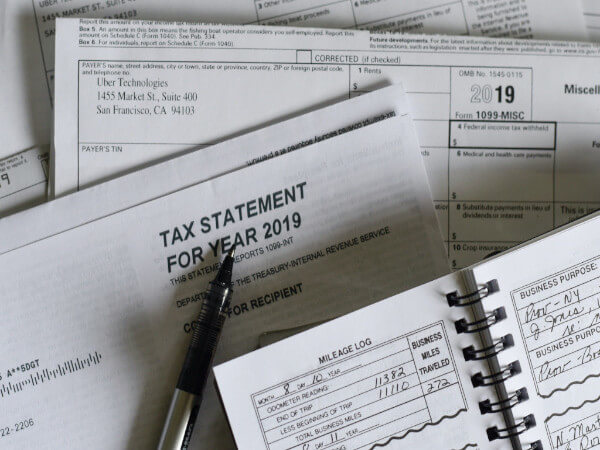Category: Legal Advising
Reduce Time Spent on Legal Drafting by 80% to Gain a Competitive Advantage
There isn’t enough time to deal with everything your firm needs to do. Here’s how Lawyaw Legal Drafting can help. Each year, the team at Lawyaw talks to thousands of legal professionals who are looking for solutions to the myriad challenges of practicing law in the 21st century. The most common theme from those conversations is that there isn’t enough time in the day to deal with everything that needs to be done. Many of those firms are hoping to use legal technology like document automation to modernize their operations — to adapt current processes to be more efficient so that their teams can do more with existing resources rather than trying to hire their way out of the problem. Even after the rise of remote work and virtual events as buzzwords in legal, it’s still a surprisingly small number of firms that have successfully adopted new technology to solve problems. According to the Future Ready Lawyers Survey released by Wolters Kluwer, only 32% of respondents said their firm was prepared to use technology to be more productive, while 88% are actively implementing new technology to try and catch up. Part of what’s driving the recent spike in adoption is the increasing evidence that modernizing firms are gaining a competitive advantage. The survey found that technology-leading firms were almost 3x more likely to have increased profitability during the past year compared to tech-trailing firms. Why Choose Document Automation? For most law firms, legal documents are the foundation of their practice. From filling and filing court forms on behalf of clients to creating custom legal documents spanning the relationship from the fee agreement to final invoice (and everything in between), drafting legal documents is an essential part of most firms’ daily activities regardless of practice area. In fact, many firms are
Read MoreIllegal hawking in No vending areas affects citizens’ Right to Life- Delhi HC
The Delhi High Court, while taking a strict stance at the failure of NDMC and municipal authority, reprimanded the illegal hawking, squatting and vending activities in Connaught Place’s No hawking area on the ground that the same violated citizens’ right to clean and healthy environment. In the instant petition, the petitioner sought for directions to the respondent, New Delhi Municipal Corporation (NDMC), in furtherance of permanently stopping the illegal hawking. The bench expressed its displeasure over the uninterrupted practice of hawking in no vending areas and issued a “stern warning” to the officers of municipal corporation and Delhi Police to ensure strict compliance of the Supreme Court schemes and High Court orders. The bench further stated that when it comes to writing letters and maintaining their record, the NDMC authorities appear to be very efficient, however, in case of actually abiding by their obligations with respect to ground work, they’ve failed miserably. For the purpose of issuing directions, the bench relied on the photographs presented by the counsel on behalf of petitioner and the referred High Court precedents. The counsel showed photographs wherein scores of hawkers and vendors were found occupying the public spaces on pavements. The bench observed that the photographs showed lack of concern of Delhi Police officers towards the unauthorized encroachments and their incompetence in ensuring the compliance of their own schemes. Moreover, the bench highlighted that the salaries of employees are paid from time to time but they’ve failed miserably in discharging their duties. The bench added that the situation where garbage is collected and not removed, results in diseases like dengue, which the city of Delhi is currently facing. The post Illegal hawking in No vending areas affects citizens’ Right to Life- Delhi HC appeared first on LexForti Legal News & Journal. Did you miss
Read MoreLawyers With ADD: A Problem or an Advantage?
Lawyers with ADD/ADHD may struggle with organization, sustained focus, procrastination and deadlines. Tactics for dealing with common challenges. In my work as a psychologist, most lawyers and law students who talk to me about their attention deficit disorder, or attention deficit hyperactivity disorder, are typically under a fair amount of stress due to their symptoms. Most people see ADD/ADHD as an obstacle to overcome. Those with ADD/ADHD often struggle with organization, sustained focus, procrastination and completing tasks on time. For lawyers, there can be real consequences for missing important legal details, letting a statute of limitations run out or missing a court date. So, viewing ADD/ADHD as an advantage is not how most lawyers usually experience it. Then again, there are many with ADD/ADHD who do see it as an advantage. In fact, some experience the flip side of inattention, namely, the ability to hyper-focus on something that grabs their attention. This can be a great strength if that hyper-focus in directed at important work-related tasks. Whether you are struggling with managing ADD/ADHD symptoms or wearing them as a badge of honor, here are helpful strategies to keep in mind. Strengths and Weaknesses First, it’s important to recognize that every human ability is either a strength or a weakness depending on the demands of the situation. The same ability can be a strength in one situation and a weakness in another. So stop viewing a given ability, or lack thereof, as either an absolute advantage or disadvantage. Is it essential to be tall to play in the NBA? Muggsy Bogues was 5-foot-3 and played there for 14 seasons. The key is to be aware of which situations and tasks are best matched with your abilities. Then, when your professional (or personal) life includes situations or demands that are mismatched with
Read MoreSC upheld NCDRC order on non-maintainability of complaint against power distributor
The Apex Court, while upholding the finding of National Consumer Dispute Redressal Commission, held that a consumer complaint against power distributor is not maintainable for raising an additional bill in case of short-assessment. In the instant case, the consumer earlier approached NCDRC against the demand of power distributor on ground of “deficiency of service.” However, the NCDRC dismissed the complaint on account that there had been no deficiency of service on part of power company and an additional bill had been raised for the purpose of recovery of “escaped assessment.” Aggrieved by the order of NCDRC, the consumer preferred an appeal against the NCDRC’s order. The division bench of the apex court agreed to the finding of NCDRC and observed that there had been no deficiency of service as defined under the Consumer Protection Act, 2019. The Supreme Court bench, while explaining that the raising of additional bill would not amount of deficiency of service, stated that it had been wrongly contended that the multiply factor had not been correct. It further explained that in case licensee discovers in the course of audit that a consumer had been short-billed, then the licensee is authorized to raise a demand. As long as consumer does not dispute the correctness of claim made by the licensee, or short assessment, the former cannot be said to be entitled to claim any deficiency. The bench concluded the order by upholding the impugned order passed by NCDRC and held that it correctly pointed that the case was of “escaped assessment” and not “deficiency of service.” Therefore, it held that the dismissal of complaint had been in order. The post SC upheld NCDRC order on non-maintainability of complaint against power distributor appeared first on LexForti Legal News & Journal. Did you miss our previous article… https://www.itcse.org/?p=175 Randy
Read MoreDon’t Say This to a Survivor
Whether counseling your client or in your opening statement, to call these people “lucky” shows a lack of empathy and risks insulting them. “You’re lucky the collision wasn’t worse.” “He was lucky the cops got there so fast.” “You’re lucky you were able to get out of the house before your husband could hurt you again.” Tone-deaf As attorneys, we often meet people who have suffered calamities. There is nothing lucky about needing major surgery. The business chief who uncovers intellectual property theft is not lucky. Whether counseling your client or addressing someone in your mediation opening statement, to call these people “lucky” risks insulting them. Yet, we misuse this phrase regularly. We tell the victim of a random criminal beating how lucky he is to only have his facial bones broken and bruised eyes swollen shut. We use the demeaning phrase “at least.” At least you weren’t killed. At least you didn’t lose your vision. As soon as you tell someone they should be thankful they aren’t worse off than they are, you have alienated that person. Empathy Neither is misfortune a contest. “Well, when I had my accident, the doctors said I would recover in a couple of weeks.” “Somebody else I know suffered this same trauma, and the injuries were much worse.” Any statement trivializing another’s suffering is a misstep. In evaluating cases, lawyers sometimes make the mistake of assuming everyone will have the same response to similar events. Because one person is able to carry on after a disaster doesn’t mean everyone has the physical stamina, mental strength, and family and work support system to do that. Some people suffer depression or a version of PTSD, post-traumatic stress disorder, all while appearing able to cope. Others become helpless to carry on their daily activities even in
Read MoreHow to Wear Color: The ‘Confront Your Closet’ Challenge, Step 2
Black and white. Black and gray. Maybe navy and cream. Women lawyers often have a hard time stepping beyond traditional conservative colors when choosing what to wear. But if you’re tired of the way those colors make you feel and ready to change things up a bit, you’ll appreciate Melanie Lippman’s latest video on how to wear color appropriately. Step Two of the Confront Your Closet Challenge Is All About Color In the first “Confront Your Closet” Challenge we focused on why the idea of getting dressed to go back to the office or meetings is so hard. So many emotions come up — it’s as if we’ve forgotten how to get dressed. For the first homework assignment, I asked you to write down your non-negotiables. What are you no longer willing to put up with when it comes to your closet? If you didn’t complete step one, be sure to watch the first video here. Now, let’s talk about adding color to your closet. Wait, What Is the Confront Your Closet Challenge? The “Confront Your Closet” Challenge is designed to help you get clarity and control over what’s going on in your closet so that you feel empowered by the way you’re getting dressed every day. Every video will give you an action item to help you change your mindset on getting dressed or provide a tip you can take into your closet. This is not about spending big money; the goal is to help you learn how to use your wardrobe in a completely different way. Finding your style, getting dressed without stress, and wearing clothes that flatter you are skills you can learn easily. Learning How to Wear Color Wearing color can be a little challenging for female lawyers because they don’t ever want to look inappropriate.
Read MoreImproving Efficiency in Business – Hire a Business Consultant
A business consultant gives expert or specialist advice in a certain area like business, finances, management, accounting, law, human resource, marketing, technology, finance, science, or any other specialized field. Their advice helps businesses achieve their short and long-term goals. The main aim of a business consultant is to provide objective and innovative guidance in business. They help businesses achieve their sales targets, customer satisfaction, competitive advantage, market penetration, and customer loyalty. The main function of business consultants is to devise and implement plans for the business that is cost-effective and yield desired results. They are usually hired by businesses to get a fresh perspective and to provide the required assistance. The consulting process starts after a client has approached the firm for which he is appointing the consultant. Once the client is at the meeting with the consultant, the first step is for the two parties to establish an agreement on the fee structure and the working pattern. The overall cost of engaging a consultant can vary depending on various factors like the length of the engagement period, the specific tasks that have to be accomplished, and the project’s scope. Some business consultants begin their engagements on a contract basis, while others work on a freelance basis. Some business consultants work as independent contractors. Freelance consultant engagements tend to be less expensive since they require shorter contracts. In most cases, business consulting is done on a team basis wherein the client hires one or more consultants to work on a part-time or temporary basis. Consultants also find it easy to recruit staff and manage projects once they are self-employed. Upon hiring the first consultant, the client needs to know what he is getting for his money. In the case of short-term engagement, the consultant may suggest the client invest in
Read More











